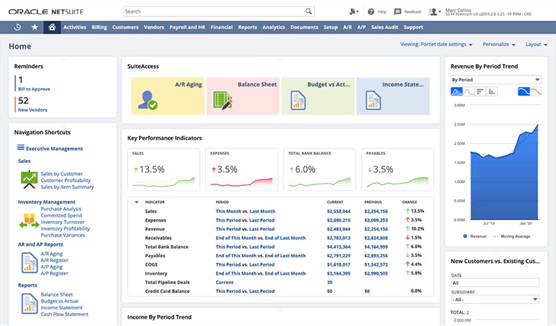Business leaders make countless decisions every day. Some hardly register as a decision at all, such as approving a routine purchase order or scheduling a quick meeting. But other decisions are truly significant, such as deciding whether to enter a new market, how to allocate financial resources for the new year, or which candidate to hire for a critical role.
With so much data and detailed analyses within reach to support faster decision-making, you’d think the process would be easier, yet the opposite often holds true. Encouragingly, decision-making is a soft skill that, with the right strategies, tips, and technologies, can be refined over time.
What Is Effective Decision-Making?
Effective decision-making is a systematic process that transforms complex business challenges into actionable solutions by clearly defining the problem at hand, gathering relevant data, weighing alternatives, and selecting the option that best serves organizational goals. A manufacturing leader might analyze production data and supplier costs before deciding on an expensive equipment upgrade, for example, while a retailer might examine inventory turnover rates and profit margins before adjusting its pricing strategy.
This sounds fairly straightforward, yet effective decision-making is often easier said than done. According to a global Oracle study of more than 14,000 business leaders and managers, 85% say an inability to make decisions was negatively impacting their quality of life, causing spikes in anxiety levels, missed business opportunities and unnecessary spending. An equal percentage of respondents report feelings of decision distress: regretting, feeling guilty about, or questioning a decision they had made in the past year.
Key Takeaways
- Decision-making requires objectivity, but cognitive biases can get in the way.
- Seek input from an array of resources for multiple viewpoints, but remember that you’re ultimately accountable for a decision.
- Consider the benefits and drawbacks of a potential decision, as well as the opportunity cost of not choosing a different option.
- Decision-making frameworks, techniques, and analysis tools can promote better decisions.
How to Improve Your Decision-Making Skills
Even experienced leaders can find decision-making to be like navigating through quicksand: The harder they try to make up their minds, the more stuck they become. An overwhelming volume of decisions, mistrust of data, and a lack of tools that connect data to actual decisions are among the reasons, the Oracle report found. Other studies fault unclear roles, overreliance on consensus, “death by committee,” and fear of failure.
The following 16 tips can help you find solid ground and improve your decision-making skills.
1. Practice Personal Accountability
Highly respected leaders and managers own their decisions and the ensuing outcomes. They are transparent about how they arrived at a decision, which helps build trust with team members and creates a culture where accountability is valued and practiced at all levels. When decisions don’t yield expected results, these leaders resist the urge to blame others or make excuses.
To demonstrate personal accountability, start by establishing clear criteria for your decisions and documenting your reasoning. Analyze what went right or wrong after the fact, share the lessons learned, and develop an improvement plan, if needed. This approach shows that you take full ownership of both the decision-making process and any consequences.
2. Identify Your Ideal Outcomes
What are you trying to achieve? Objectives should align with organizational goals; they may be quantitative, such as a 20% year-over-year increase in revenue, or qualitative, such as higher staff morale. Establishing ideal outcomes at the outset can prevent defaulting to familiar but potentially inferior solutions. As part of this process, evaluate alternative choices in light of their feasibility, risk, cost, and required resources. Also, determine specific metrics to track progress; for the previous examples, look at monthly sales growth to measure revenue growth and employee turnover rate to gauge morale.
3. Collect the Details
Informed decision-making hinges on a thorough understanding of key details. Start with hard data obtained from financial statements, enterprise resource planning (ERP) systems, analytics dashboards, and market research. In addition, gather anecdotal insights from employees, customers, and other stakeholders through surveys, focus groups, and one-on-one conversations. This amassing of information will create a more complete picture when the time comes to evaluate options and anticipate outcomes.
4. Invite Multiple Perspectives to Weigh In
Effective decision-making embraces an array of viewpoints. Inviting the perspectives of colleagues, team members, customers, shareholders, and other stakeholders helps identify blind spots and broadens the pool of ideas. You don’t have to ask everyone, of course; consider only those with relevant expertise who can offer unique insights. An added bonus: Asking employees for input can increase their engagement and investment in supporting successful outcomes.
5. Brainstorm the Short- and Long-Term Consequences
Analyze the short- and long-term effects of a potential decision. It can be easier to prioritize short-term benefits that solve an immediate pain point or meet a goal more quickly. Sometimes that’s appropriate, but by selecting one option, the benefits that may have materialized had you chosen another are sacrificed. This is known as the opportunity cost, and it’s an important consideration, particularly for smaller businesses with limited resources. For example, the decision not to introduce a new product line because it might reduce immediate profitability could also inhibit significant revenue growth opportunities down the road.
6. Identify Potential Impacts of Your Decision
Even the most carefully considered decision may have unintended aftereffects. While you can’t predict every outcome, you can think through potential challenges and create contingency plans. For example, deciding to change a key supplier to reduce costs might lead to a potential disruption in operations during the transition period. Consider how you’ll manage inventory gaps or explain shipping delays to affected customers. Having mitigation strategies in place speeds response times should complications arise.
7. Improve Your Communication Skills
Strong communication skills ensure that others around the business understand the reasons for a decision and help to extract the most relevant insights. They also help prevent second-guessing or team sentiment turning against the decision. Effective approaches include structured presentations, one-on-one conversations with key stakeholders, and data storytelling. Regular updates and communication channels that facilitate two-way dialogues keep everyone on the same page, as well.
8. Use a Decision-Making Framework
As the Oracle study pointed out, making business decisions can be downright draining. But an established decision-making framework brings structure to the process and keeps it moving forward. Decision-making frameworks capture and organize key details, clarify priorities, and document reasoning. In addition, they help decision-makers maintain objectivity when evaluating options. Frameworks range from straightforward methods, such as pros and cons lists, to more comprehensive approaches, such as risk assessment matrices, cost-benefit analyses, or scenario analyses.
9. Ground Your Decisions in Data
There is no shortage of studies demonstrating that decisions based on solid, accurate data result in positive outcomes. Indeed, the ever-increasing rise of sophisticated business analytics tools, cloud-based ERP software, and artificial intelligence (AI) represents billions of dollars’ worth of investment by vendors and companies industrywide, as they seek to better and more quickly understand the volumes of data they create or collect. According to a recent S&P Global report of more than 2,350 global SMBs, 98% say at least some of their business decisions are data-driven. In addition, the report found that “highly data-driven” companies (19% of total respondents) are adopting AI at about twice the rate of less data-driven companies and reporting greater positive impacts.
10. Understand Your Cognitive Bias
As previously mentioned, decision-making demands objectivity, but humans are often influenced by unconscious thought patterns that sway their choices. Examples include negativity bias, in which someone places more weight on negative information over positive; and confirmation bias, as when someone looks only for information that confirms their existing beliefs. Some ways to counter cognitive biases include establishing clear decision-making criteria, deliberately seeking opposing evidence, and inviting those with diverse perspectives into the decision-making process. Documenting your reasoning can also provide clarity about where emotions or assumptions might be influencing decisions.
11. Learn How to Effectively Timebox
Taking too long to make a decision can reduce productivity, increase stress, and result in lost opportunities. Timeboxing is a technique that allots specific blocks of time for decision-making. Setting a hard deadline for making the decision, as well as the smaller components leading to it, such as gathering and analyzing input, helps keep the process under control and moving forward. For example, a business owner choosing a new healthcare plan for employees might set aside four days to review different providers, three days to compare coverage options and costs, and two weeks in total to commit to selecting a plan.
12. Break Down Big Decisions
A smart way to tackle any big, possibly daunting task is to break it down into smaller, manageable steps and take them on one at a time. The actual steps might include many of the points on this list, including defining the decision to be made, gathering input, evaluating data, and weighing the consequences.
13. Take Advantage of Trainings
Structured courses, external training companies, and degrees/certificate programs that teach decision-making skills abound; many are free or low-cost. Training pairs academic knowledge about decision-making techniques, risk assessment, root cause analysis, and more with practical exercises, case studies, and real-world applications. These learned skills can be passed along throughout the organization, fostering a culture of informed decision-making.
14. Learn From Other Leaders
Another source of education is fellow business leaders who can articulate their decision-making processes and discuss what worked, what didn’t work, and what they learned. Leaders can be found within your company, at conferences and networking events, and through webinars and collaborative learning platforms. Their stories may also be shared in blog posts or covered by business media.
15. Reduce Your Stress Level
The decision-making process can be incredibly stressful, especially when the stakes are high. Being trapped in analysis paralysis or embroiled in a difficult team dynamic only elevates the pressure. It’s important to build in some breathing room when setting up timeboxes to allow yourself chances to step away from the process to clear your head. Work out, eat, rest, or do something else unrelated to the task at hand to recharge your mental battery.
16. Reflect After Each Decision
Tap into the lessons of hindsight, learning from both successes and failures. Take note of any patterns in the decision-making process and outcomes. Seek outside input and/or regroup with your team in a postmortem to review how each step of the decision-making process impacted the next, analyze key performance metrics, and document what worked and what could have been done differently. For example, was the data used to inform the decision accurate? Were alternative options adequately considered? Systematic assessment can strengthen future decision-making.
Leverage Technology to Make Confident Decisions
No one disputes the power of data-driven decision-making, but the ability to dig deep into business intelligence requires an advanced platform with access to organization-wide real-time financial, operational, and transactional data. NetSuite ERP is a cloud-based, AI-powered solution that automates core business processes, including accounting, inventory management, supply chain management, and customer relationship management. The always-available product centralizes data in a common repository, so decision-makers can feel assured that they’re working with the same, accurate information, served up on handy visual dashboards and in detailed reports. NetSuite ERP scales easily as a business grows, standardizes workflows, and connects teams from across departments, underscoring why choosing to engage with NetSuite may be the wisest decision you’ll ever make.

Decision-making is a constant for leaders; fortunately, it’s a skill that can be optimized with time and experience. With the proper guardrails and tools in place, decision-making can evolve from what might feel like a free-for-all process to a structured, data-based practice that leads to timely, desired outcomes.
Decision-Making Skills FAQs
How do you develop decision-making skills?
Decision-making skills can be developed through one or a combination of methods. They include structured courses, industry conferences, mentorship, collaborative learning platforms, and analysis of one’s own past decisions.
What are the 5 keys of decision-making?
Five key elements of decision-making are identifying the issue at hand, gathering relevant information, evaluating the options and potential impacts, making the decision, and reviewing the results.
What are the steps in the decision-making process?
The decision-making process varies with the situation, but it typically includes understanding the context of the decision that needs to be made, weighing several options, collecting outside input, eliminating biases, setting a deadline for making the decision, and analyzing what worked and what you’d do differently.









